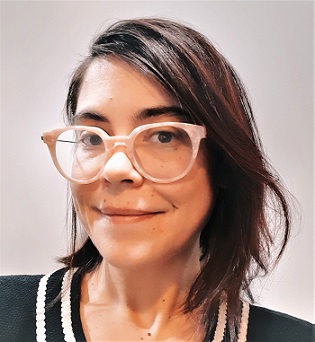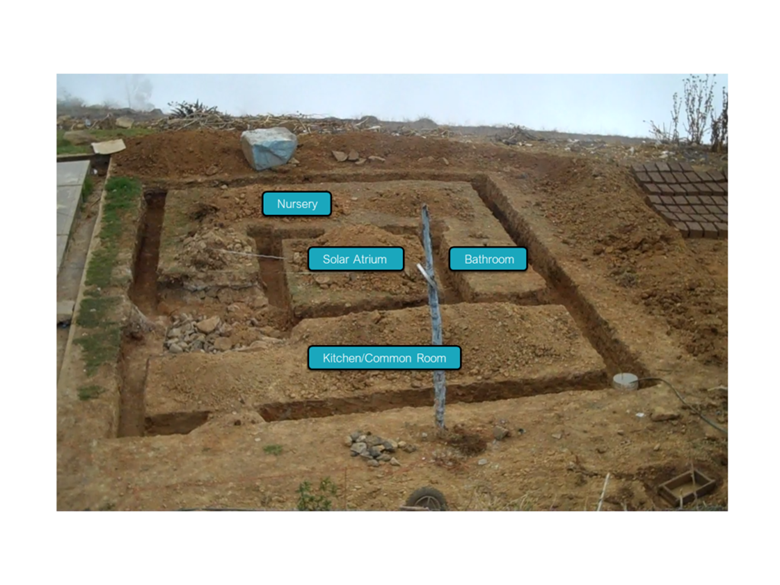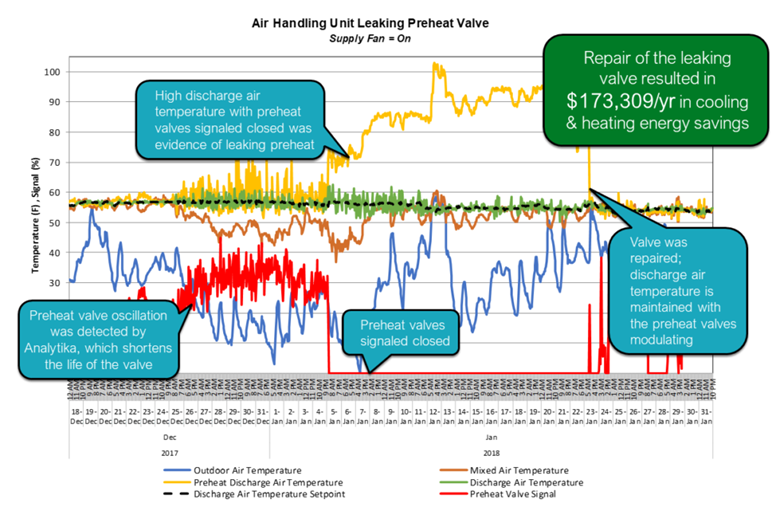There are many opportunities in engineering for women to network and support one another.
One such example is the story from a Cimetrics Senior Analyst

Julianne Rhoads – CEM, EIT – Senior Analyst
https://www.cimetrics.com/
|
March 2022 |
[an error occurred while processing this directive] |
| Building analytics then and now There are many opportunities in engineering for women to network and support one another. One such example is the story from a Cimetrics Senior Analyst |
 Julianne Rhoads – CEM, EIT – Senior Analyst https://www.cimetrics.com/ |
[an error occurred while processing this directive]
| Articles |
| Interviews |
| Releases |
| New Products |
| Reviews |
| [an error occurred while processing this directive] |
| Editorial |
| Events |
| Sponsors |
| Site Search |
| Newsletters |
| [an error occurred while processing this directive] |
| Archives |
| Past Issues |
| Home |
| Editors |
| eDucation |
| [an error occurred while processing this directive] |
| Links |
| Software |
| [an error occurred while processing this directive] |
There are
many opportunities in engineering for women to network and support one another.
One such example is the story from a Cimetrics Senior Analyst
who used a service-learning opportunity presented to her while
attending college to help tackle electrification and housing issues in
Peru, educate the communities, and expand her horizon and personal commitment
to improving the community. Service-learning gives students the opportunity to
work with community organizations and businesses, tackling real life issues.
Projects range from developing business plans for non-profits, increasing
access to fresh water and plumbing in the Tohono O'odham Nation, and creating
energy solutions for a village in Peru. Here is her story:
I recently purchased a virtual reality
(VR) headset and used it to visit places around the world in Google Earth. I
flew over petabytes of data towards South America and began searching for
Huanchay, a small district 8,500 feet high in the mountains of Huaraz, Peru.
The remote village has just one main road and is not an impressive showcase of
VR technology. I knew there would be no street views or panoramic photos of
Huanchay. I was looking for a grainy satellite image of a 600 square foot adobe
house that I helped design and build 8 years ago while getting my master’s
degree in solar energy engineering at UMass Lowell.

2010 crew from UMass Lowell.
Julianne is third from left on the
bottom row.
I found the house with the small interior
courtyard that provided passive solar heat at the end of that one main road.
When I last left Huanchay, it was little more than a foundation. Now that I’m a
data analyst, how I wish I could read data from the temperature sensors inside
to see how much heat is collected from that solar courtyard!

House designed by Julianne’s team in
Huanchay, a small district 8,500 feet
high in the mountains of Huaraz, Peru.
The service-learning program at UMass
Lowell worked with graduate students to bring solar projects (and soccer
balls!) to Peru for over 20 years. The success of the program was due in part
to the continued presence in these remote areas to regularly maintain the
systems and educate the communities. Without this “ongoing commissioning,” a
battery could fail in a solar charging station, for example, and not only would
the people be without power, they would lose faith in the technology. Routine
follow-up also enabled UMass to recognize opportunities – schools that needed
small solar installations to qualify for laptops from the government, asparagus
farms that could benefit from wind powered drip irrigation, or a small medical
clinic for pregnant mothers in Huanchay – which informed our design for the
house we built. It was the farmers that UMass had been working with for years
that drove us up to Huanchay in the back of their asparagus truck. It was local
Peruvians who named our project, “Casa Solar Maternidad”.

Casa Solar Maternidad
It took years to design, redesign and
build the passive solar house I flew over with my VR goggles. We adapted our
design as our familiarity with the region grew. For example, the size and
quantity of the wooden beams we used for the roof were limited by the wood we
could cut from the fallen and dried eucalyptus trees in the area. We had to use
corrugated plastic for the courtyard sunroof because plexiglass was not
available. We were asked by the mayor to increase the thickness of the exterior
walls by 6 inches to better withstand earthquakes.

Inside
sunroom

Foundation
The
window coverings would be sewn from blankets by local women.

Sewing
wool covering
Some
of our redesigns were scribbled on scratch paper while hiking for wood. There
were many ‘change-orders’ but the result was a project that would be functional
and sustainable for the doctors and mothers in Huanchay who were to use it.

Design
Several
years later, my first job out of school was developing performance contracting
projects as an energy engineer. I would audit buildings and deliver a package
of energy efficiency and general facility improvement measures that would pay
off over time with energy savings. Fresh-faced out of college, I thought I
would be evaluating hot new technologies and using advanced energy modeling
programs. What I found was a lot of deferred maintenance needs – disconnected
fan actuators, dirty filters, leaking steam traps, oh my! A typical performance
contract was 5 to 20 years and utilized energy savings from quick payback
measures like efficient lighting or controls sequences to balance higher
payback measures like replacing HVAC equipment beyond its useful life. I know
what the future holds for equipment without maintenance programs, and I wish I
could use my VR headset to look at the work I did in those facilities to see
how they are operating years later. Now that I work as a data analyst, I have a
way to do just that.
When
I was manually gathering and entering information over the course of weeks from
equipment data loggers during audits, I had no idea how much value was hidden
in the thousands of points buried in the building automation system (BAS) and
how much more efficiently that information could be harnessed. As an analyst, I
now have access at my fingertips not only to this seemingly overwhelming amount
of data, but to powerful algorithms that turn the data into a list of
operational faults and inefficient sequences of operation at the central plant,
air handling, zone and utility metering level. I can monitor an entire campus
of facilities with hundreds of interconnected pieces of equipment and manage faults
in real-time. By communicating this information to facility personnel,
work-orders are issued and faults are fixed, and I am able to track changes in
the data to verify and quantify the improved performance of the equipment.
One
particular project stands out in my mind as the most satisfying to date.
Through data analysis, I detected an oscillating hot water heating valve. I
notified the facilities manager that the valve was opening and closing rapidly.
An automation technician was called in to investigate the issue and found that
hot water was leaking through the closed valve at the stem. The issue was not
detected at the site because the airstream temperature remained unaffected, and
therefor there were no comfort complaints. Before the valve oscillation could
be addressed, the valve leakage progressed to the extent that the temperature
of the airstream directly after the heating coil was over 100 degrees, more
than 50 degrees hotter than the intended temperature. I again notified the
facility, the valve was verified to be blown open, and it was replaced within
30 days. This repair resulted in more than $173,000 in avoided annual energy
costs. This project was so rewarding because my ongoing relationship with the
equipment, the facilities personnel and the building automation system
technician ensured the fault was caught and resolved in a short time frame.

Building
equipment need constant, continuous commissioning to operate as intended, and
some faults can remain undetected for months, and even years. Components fail,
schedules drift, sensors lose their calibration, and equipment is put in
override. Data is immensely important in identifying these faults, as are the
fault detection algorithms, but just as important is an ongoing relationship
with the site and personnel. Our recommendations adapt as our familiarity with
the equipment, building operation, and areas of concern grows. Just as I
couldn’t design a home for use in Peru from my chair in Boston by merely
looking at Google Earth, the accuracy and relevancy of my building data
analysis requires an ongoing relationship and understanding of the history of
the site. And as my recommendations are implemented and leaking valves are
fixed, I can still watch over it all without leaving my office, which is ALMOST
cooler than my VR headset.
My
advice to women in this industry is to never be afraid to take on a challenge;
it’s OK to be scared because everyone gets scared. Explore the world and mentor
and share ideas with others. In my research at UMass Lowell, we found the
female faculty was in higher agreement in general than male counterparts on the
principle of Service-Learning being integrated throughout the college
curriculum. Increasing diversity in the engineering faculty and student body
and service-learning programs can encourage more students, businesses, and
communities to engage with one another to solve real societal challenges.
https://peer.asee.org/engineering-faculty-attitudes-towards-service-learning.
Julianne
Rhoads – CEM, EIT – Senior Analyst
[an error occurred while processing this directive]
[Click Banner To Learn More]
[Home Page] [The Automator] [About] [Subscribe ] [Contact Us]